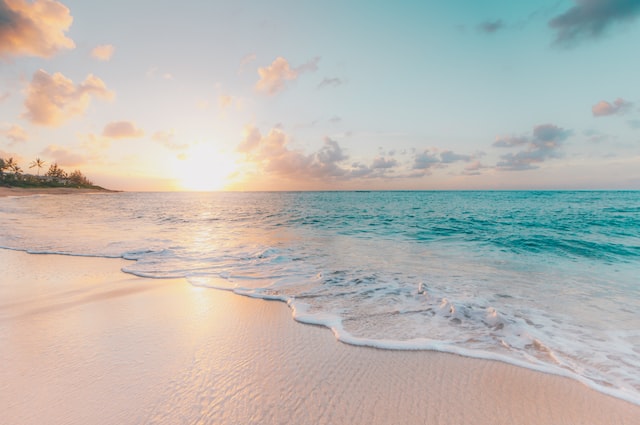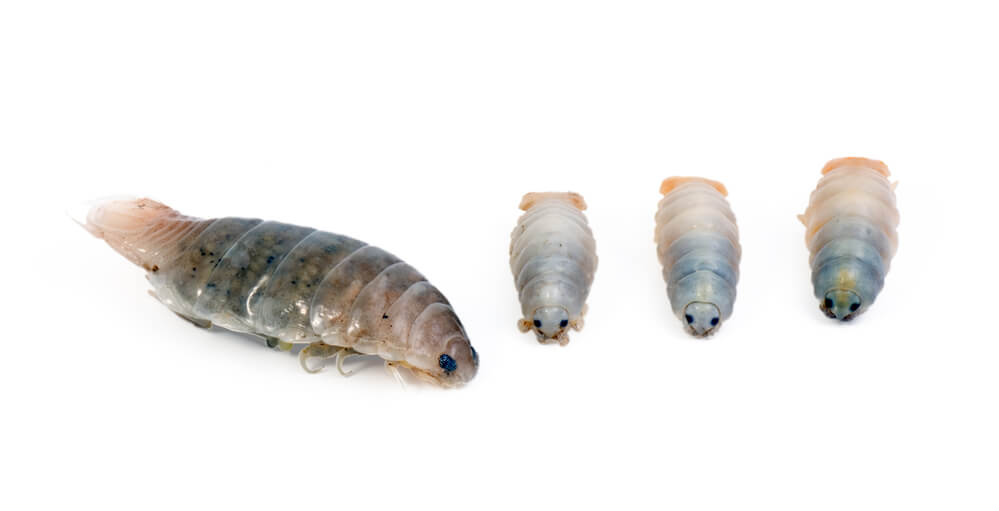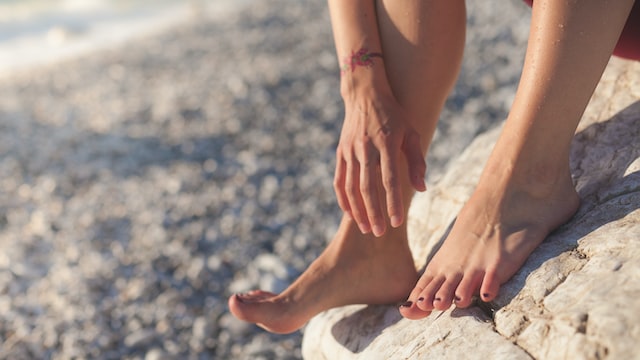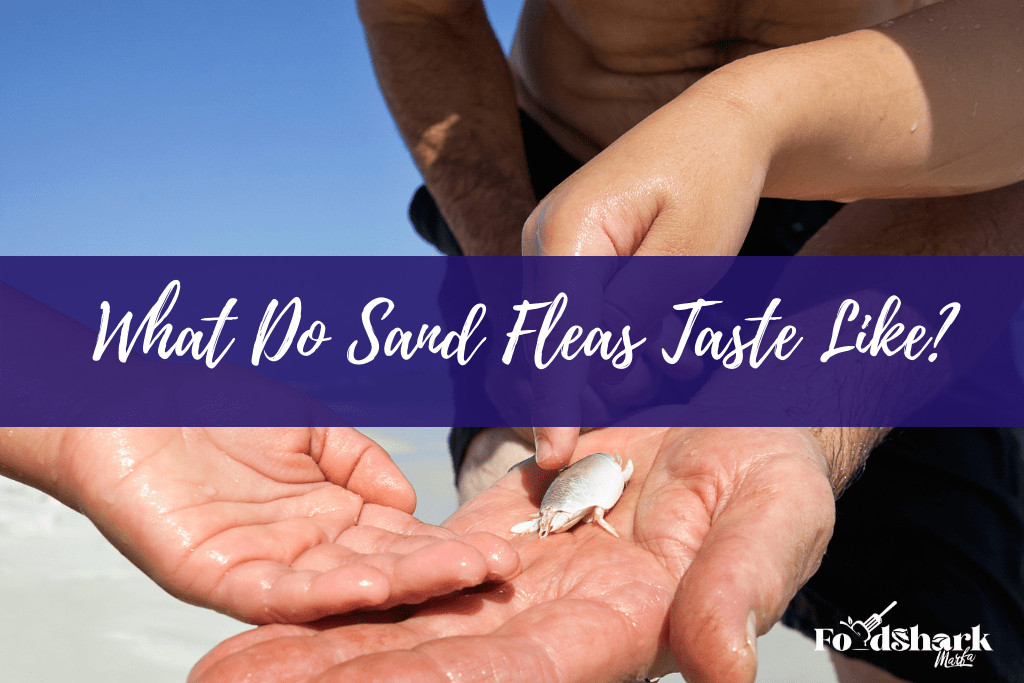You can tell by the name what sand fleas are - flea-like creatures that live in the sand. However, sand fleas are not even insects. They are crustaceans. In scientific terms, they are known as decapod crustaceans, which are similar to shrimp, crabs, and crayfish among others. Some might even call them beach hoppers or sand hoppers because they have the ability to jump two inches from the ground.
Like fleas, sand fleas also jump around and feed on the blood of humans and animals. They are commonly found in tropical regions where the climate is warm. If the temperature drops below 50°F, they may not be able to survive.
You can catch sand fleas by digging into damp sand with a net when the waves come in. Then, put them in a half-full bucket of water so they cannot escape.
What do Sand Fleas Look Like?
Sand fleas are small in size but not as small as fleas. They are usually 0.4 inches in length, which makes them way bigger than fleas.
Most sand fleas you will come across are gray, brown, or greenish in color. Each has five pairs of legs and three pairs of pleopods. Sand fleas have antennae that are usually reddish-brown in color. They look somewhat like a seashell with two feelers at the front.
Where Can You Find Sand Fleas?

Sand fleas are typically found in tropical regions like South America, Asia, and Africa. They may also be popular around areas near the Atlantic or European coastal regions. You can also find them on beaches in the Caribbean. Apart from beaches, sand fleas can also be found in marshes and swampy areas.

Sand fleas can be found in damp sand. They are usually buried underneath the sand at high tide during the daytime. They are most active during nighttime. This is when they come of out the sand for feeding.
Are Sand Fleas Edible?
While most fishermen use sand fleas as fishing bait, a vast number of people actually enjoy eating them as well. Sand fleas make a great crunchy snack in some parts of Asia.
You can stir-fry sand fleas in butter using citrusy and spicy seasonings of your choice. You can also coat them in batter and deep fry them. You can roast them as well for a smokey flavor. They taste quite similar to crabs and shrimp.
Sand fleas are perfectly safe for consumption as long as you cook them all the way through. Whether you stir fry or deep fry, one thing that you must do before cooking is to boil them.
Sand fleas are known to carry lots of parasites so boiling will help to get rid of the parasites. Boiling will also help to soften the shell, which makes them easier to eat.
Before you throw them in boiling hot water, you might want to clean them in fresh water to get rid of all the sand particles. You don’t want that sandy crunch when you bite into them.
So, what you want to do is place them in a big bucket filled with fresh water and stir them around to remove the sand. Then, you can boil them, coat them in tempura batter, deep fry them, or even stir fry them.
Check out this video where they made Cajun-style sand fleas!
Possible Health Risks
As stated before, sand fleas carry many parasites. So, if you eat them raw or do not cook them thoroughly, you will definitely get sick. The parasites are likely to release toxins into your body and you may develop infections in your digestive system.
If you’re on the beach and you get bit by a sand flea, you may develop parasitic skin disease.
Tungiasis is one such disease that is caused by female sand fleas. When you contract Tungiasis, the female sand flea penetrates the skin, feeds on blood, and then produces eggs.
The upper half of the female sand flea penetrates the skin while the lower half remains outside the skin. The female will produce eggs in 4-6 weeks that will fall to the ground since the rear part of the sand flea is not inside the skin. As soon as the eggs are produced, the female sand flea will perish.
Sand fleas will usually bite in areas around your feet or ankles - typically below the knees. Since they are so small in size, you probably won’t notice when they first bite your skin.
However, you may notice a cluster of tiny red bumps around the affected area. If you get bit by a male sand flea, the bumps will usually go away in 1 or 2 weeks. However, if you get by a female sand flea, there are high risks of catching Tungiasis.

When you have Tungiasis, your feet will be extremely itchy. The infected areas may become swollen and red. You are likely to feel pain whenever you try to walk or move your feet. In extreme cases, you may have to amputate the infected limbs.
In order to treat Tungiasis, you will have to remove the female sand flea from your skin surgically. It is best if you seek help from a health professional in a sterile condition instead of doing it by yourself.
Another common disease transmitted by sand fleas is Leptospirosis. Common symptoms of this disease include fever, headaches, and fatigue. The bacteria may enter your body via open wounds or cuts. If you don’t treat Leptospirosis, it may affect your kidneys and liver as well.
In order to avoid sand flea bites, you can use insect sprays and repellents on your legs before going to the beach. Since sand fleas usually come out during dawn and dusk, you might want to avoid going to the beach during these times. Another thing you can do is keep your legs covered when you’re catching sand fleas.
Final Thoughts
A few years back, when someone offered me stir-fried sand fleas, the last thing that I wanted to do was eat them. The thought of eating something similar to fleas made my body squirm. However, when my friend offered me a bowl of sand fleas tempura on our trip to Carolina, I couldn’t help but try a few - and I’m glad I did.
Not only did they smell like crabs but they also tasted like crabs! The texture was soft and the shell on top gave a nice crunch to the snack.
It was actually super delicious and I’ll definitely be willing to try some more the next time I visit. If you are making seafood dinner, it would be a nice touch to add a bowl of sand fleas for appetizers.
If you’re careful enough, you will be able to catch sand fleas without putting your health at risk. Whichever recipe you follow, make sure to cook the sand fleas properly before eating.


